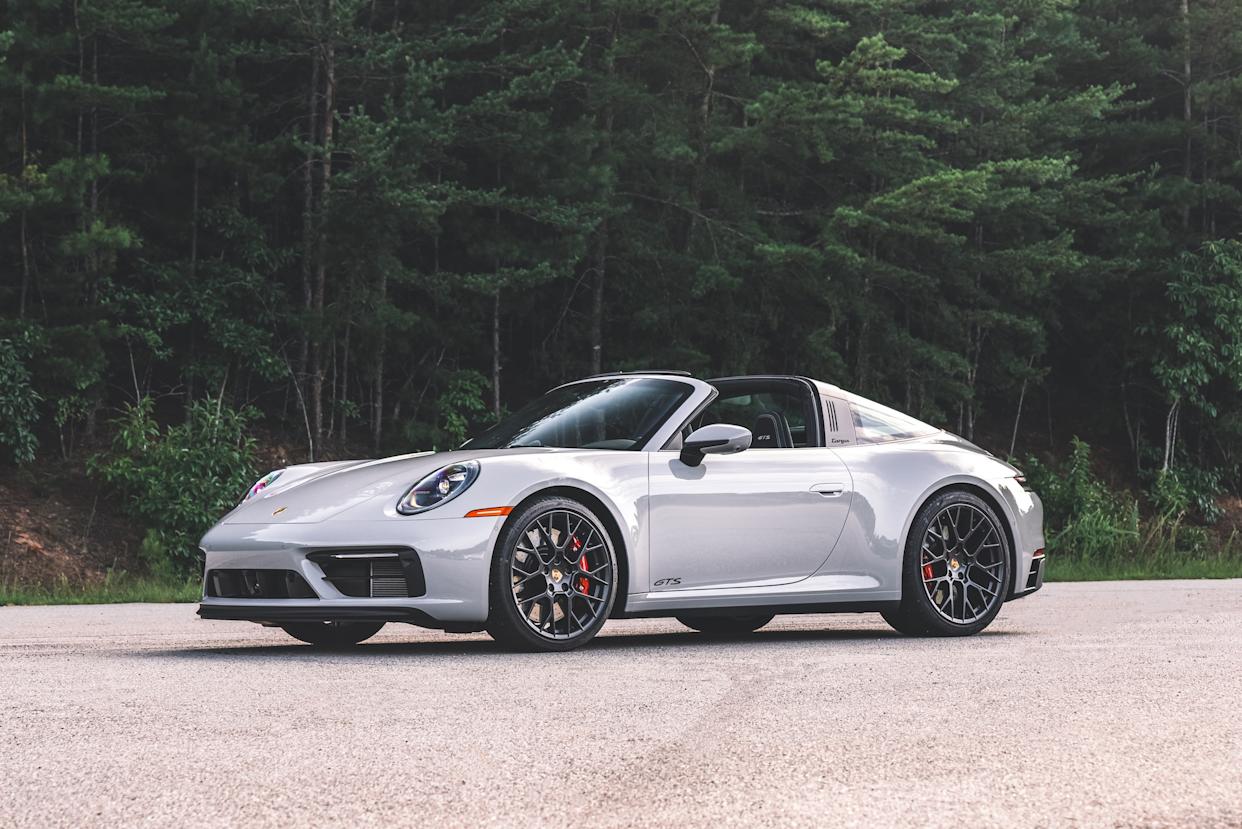
I’ve been an automotive journalist for 15 years, and it feels like I’ve been writing about the Porsche 911 hybrid for half of them. First came the rumors with varying degrees of credibility. Was the 911, the model that shaped Porsche as we know it, really going hybrid? It wasn’t until the track-only 911 GT3 R Hybrid raced in the 2010s that the foundation for a road-going, gasoline-electric trim was established, and hybrid technology finally entered the 911’s stratosphere. Say hello to the 2025 Porsche 911 Targa 4 GTS.
Now, the term “hybrid” means something wildly different depending on the context. Fear not: Porsche didn’t turn its flagship into a Toyota Prius. The first production-bound hybrid 911 takes a totally different (and much softer) approach to electrification than, say, the Cayenne or even the bonkers 918 Spyder. It’s not a plug-in hybrid, so you won’t find one parked at an EV charger, and the electrified part of the system can’t power the 911 on its own.
So, what exactly does the hybrid bring to the table?

The Basics
Power comes from a 3.6-liter flat-six fitted with a new electric exhaust turbocharger that sends turbo lag the way of the carburetor. That explains the “T” in the “T-Hybrid” name. Crucially, the electric turbo replaces the old twin-turbo setup used by the previous GTS while improving throttle response and converting exhaust into electrical energy. Porsche also wedged an electric motor between the engine and the eight-speed PDK, which is linked to a 1.9-kilowatt-hour battery pack located in the trunk. This pack is tiny, about the size of a 12-volt battery.
The engine alone produces 478 horsepower and 420 pound-feet of torque, while electrification bumps those figures to 532 and 449, respectively. For context, the pre-facelift 911 GTS was rated at 473 horsepower and 420 pound-feet of torque. “Electrification adds weight,” you say? Yup, but not as much as you might assume. The new GTS is 103 pounds heavier than its predecessor. Put another way, you’d very likely haul around more weight if you carried a passenger in the previous model.
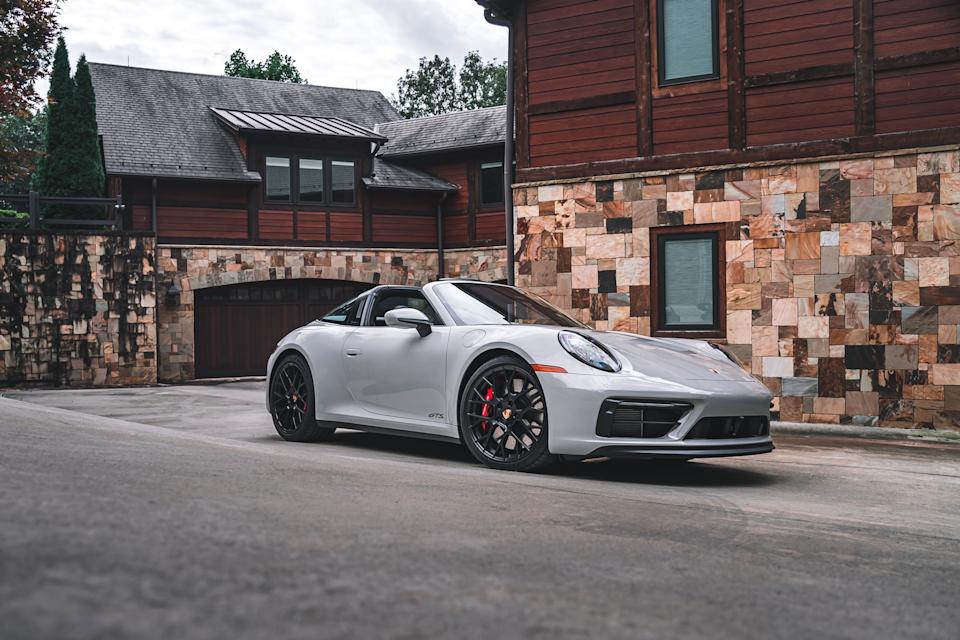
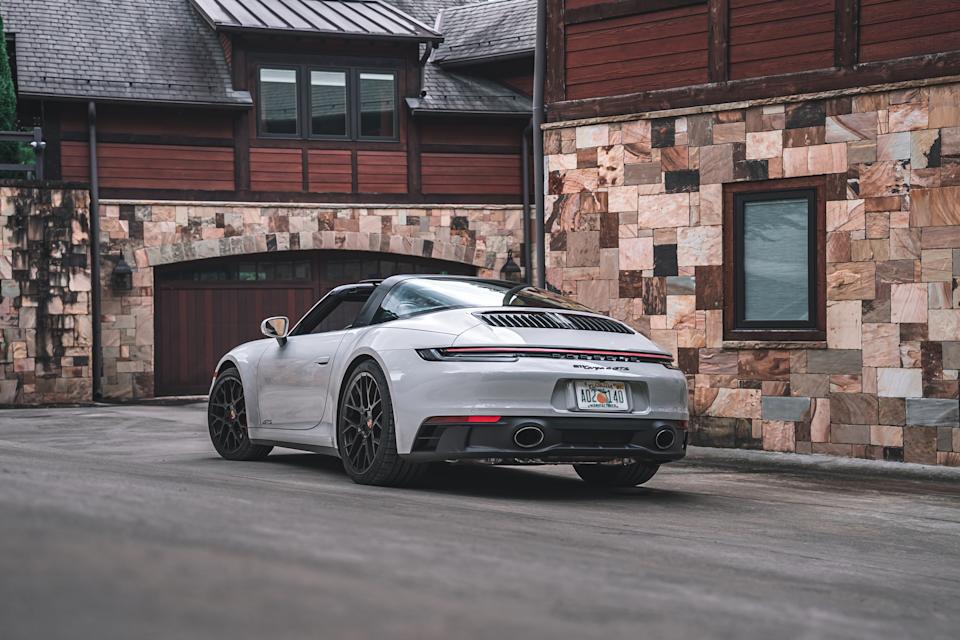
Keeping weight in check partially explains why the GTS isn’t more heavily electrified. Using a plug-in system with a bigger battery pack, like the one available in the Cayenne, would have made it a lot heavier. In the ever-growing realm of hybrid cars, the 911 GTS stands out as markedly unhybrid.
The GTS doesn’t look like a hybrid, either. Porsche steered clear of the green accents it adds to the hybrid variants of the Cayenne and Panamera, and chose more subtle styling instead. If you want to tell the world that you’re rolling in the first hybrid 911, you can order your GTS with a “T-Hybrid” decal on the bottom of each door. If you’d rather keep that part quiet, you can, as there are no badges or mentions of it anywhere on the car. It’s very much one of those “IYKYK” situations.
It’s a similar story inside, where the only hint that the accelerator pedal is linked to a hybrid system is a powertrain-specific display in the instrument cluster. Build quality is excellent—I’d expect nothing less from Porsche—and there’s loads of tech packed into the dashboard. As Deputy Editor Jerry Perez highlighted during his test of the 911 S, Porsche replaced the ignition switch with a push-button, though it remains located on the left side of the steering wheel, and the instrument cluster is now fully digital. The screenfest has inevitably reached the 911; even the once-analog tachometer is gone.
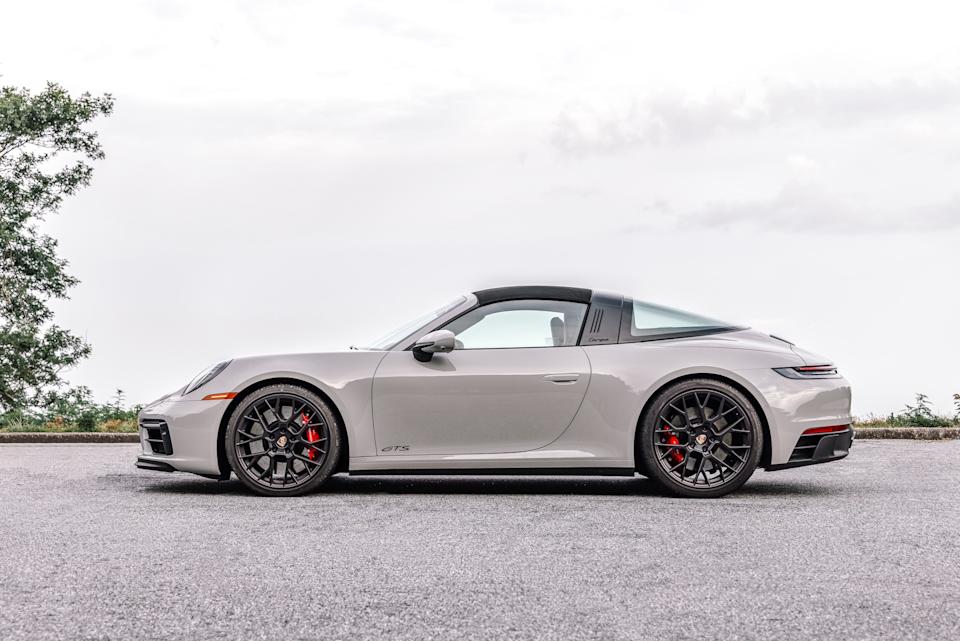
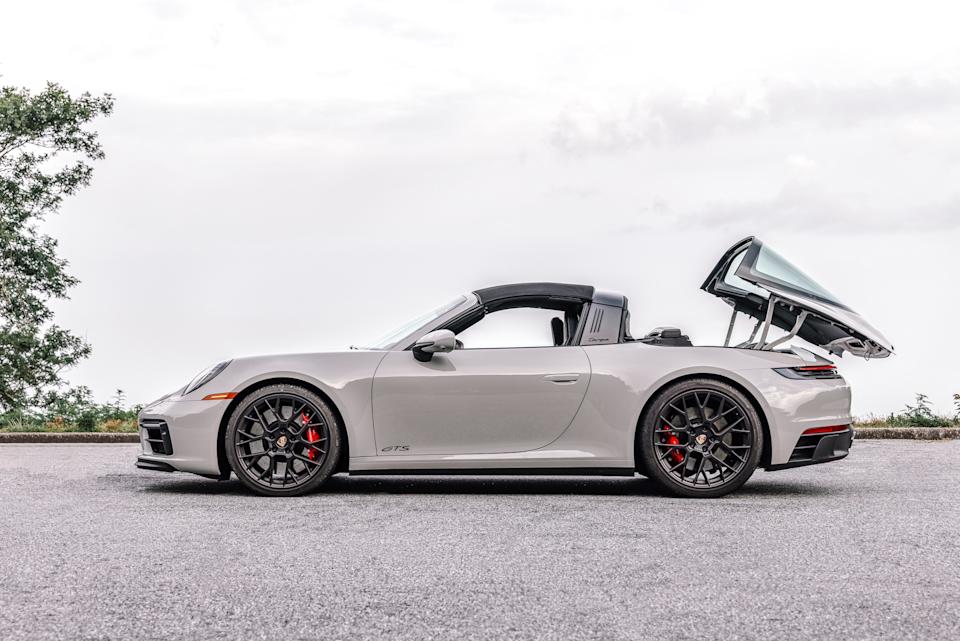
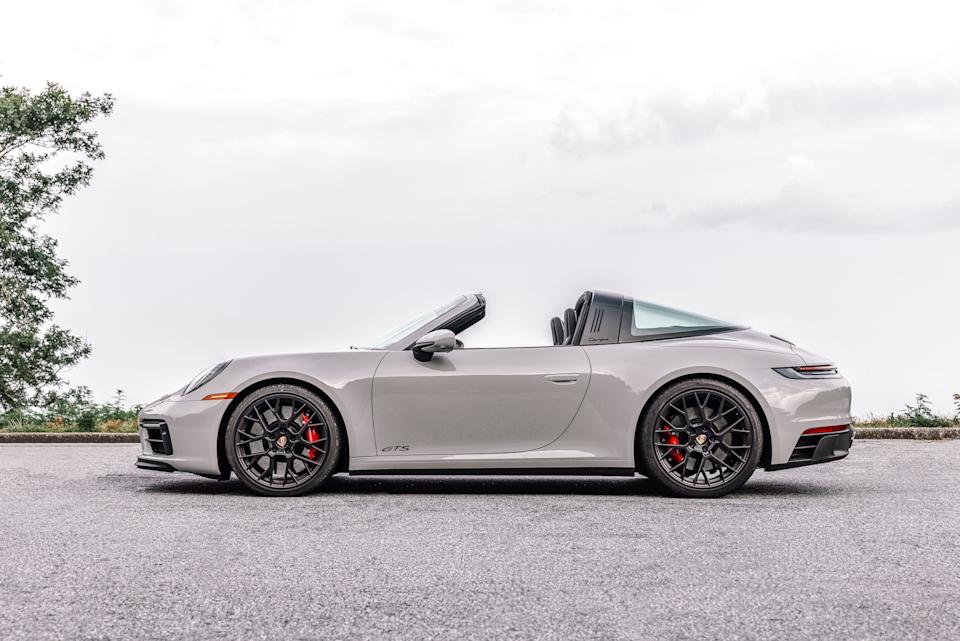
Driving the Porsche 911 Targa 4 GTS
After years of writing about a hybrid 911, I’m finally in Germany sitting behind the wheel of one. A Targa 4 GTS, with its long, sloping hood and cool retractable top, is aching to hit the windy roads outside of Stuttgart. It doesn’t take long to tell that the hybrid system’s main purpose is to increase performance; the flat-six remains the star of the show. The GTS keeps its promise of delivering immediate, lag-free acceleration, and it sounds just like a 911 should as it picks up speed. It’s stunningly quick in its standard configuration, and it becomes all-out explosive when you flick the steering wheel-mounted dial into Sport or, better yet, Sport Plus.
Straight-line acceleration only tells part of the story, and it’s not what the 911 is about. This is a car that reveals its personality on a curvy road. Keep in mind that it’s not small: It’s approximately 73 inches wide, so it’s about as wide as a Ford Ranger, and yet, it’s characterized by handling that’s both precise and approachable. You don’t need to be Walter Röhrl to have a blast in the GTS. It’s agile, it’s nimble considering the weight it’s lugging around, and the hybrid system’s operation is seamless.
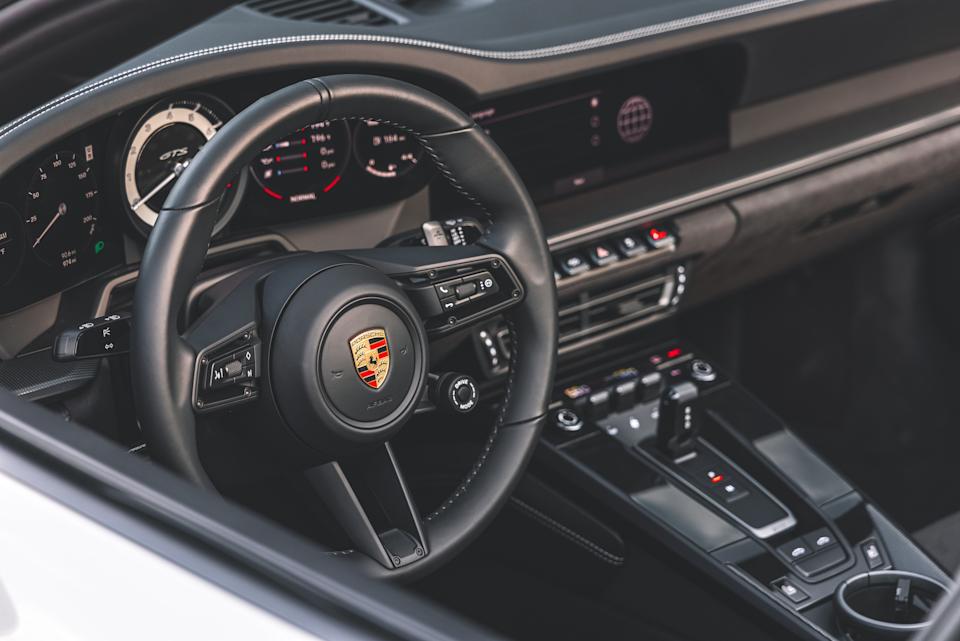
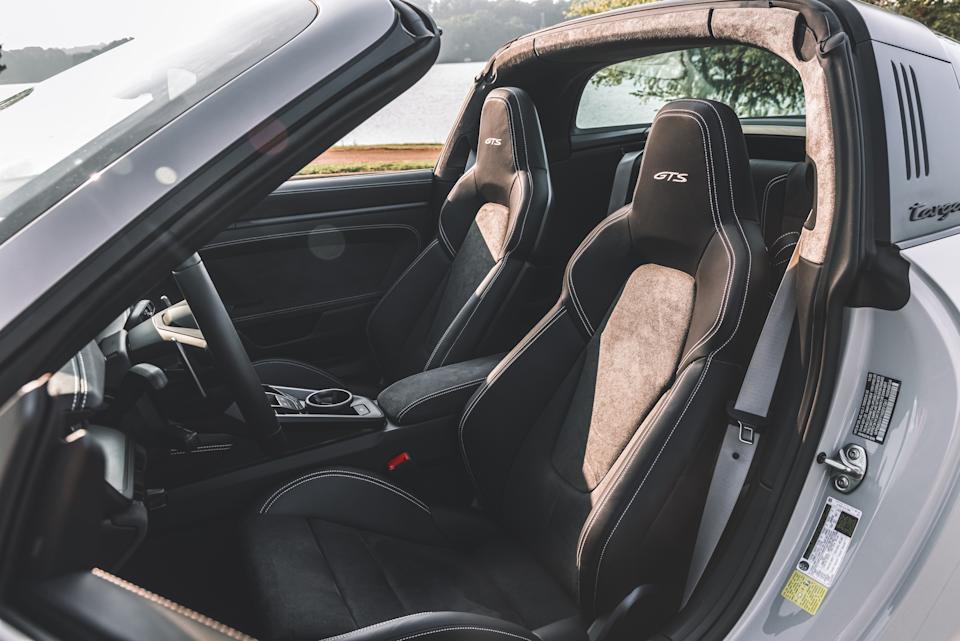
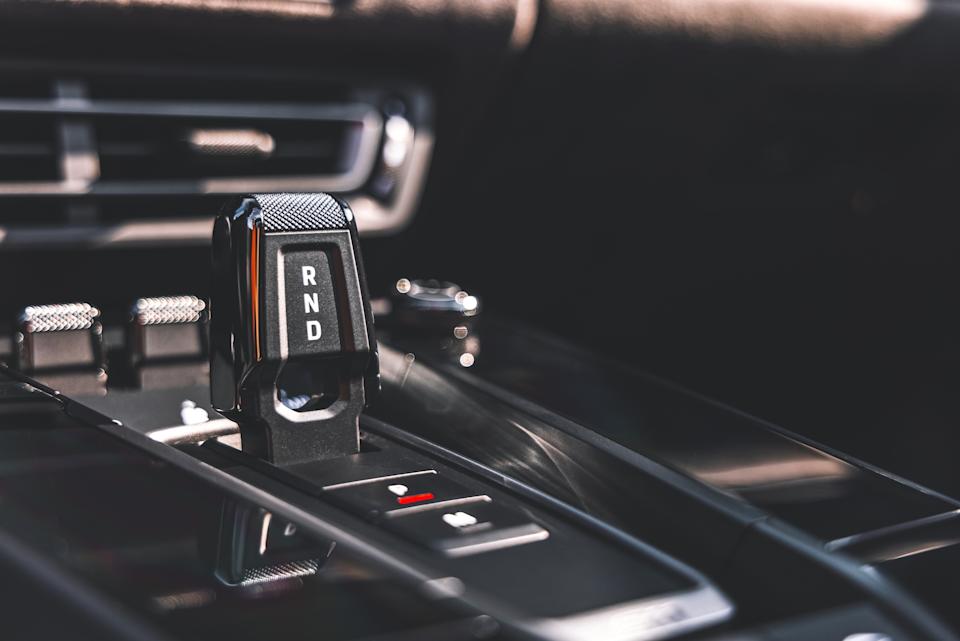
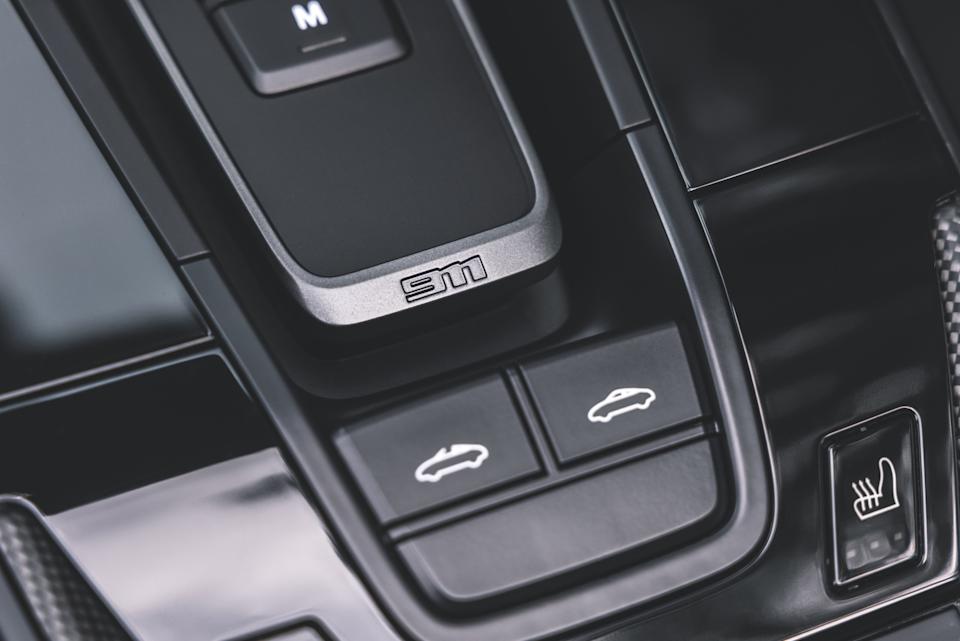
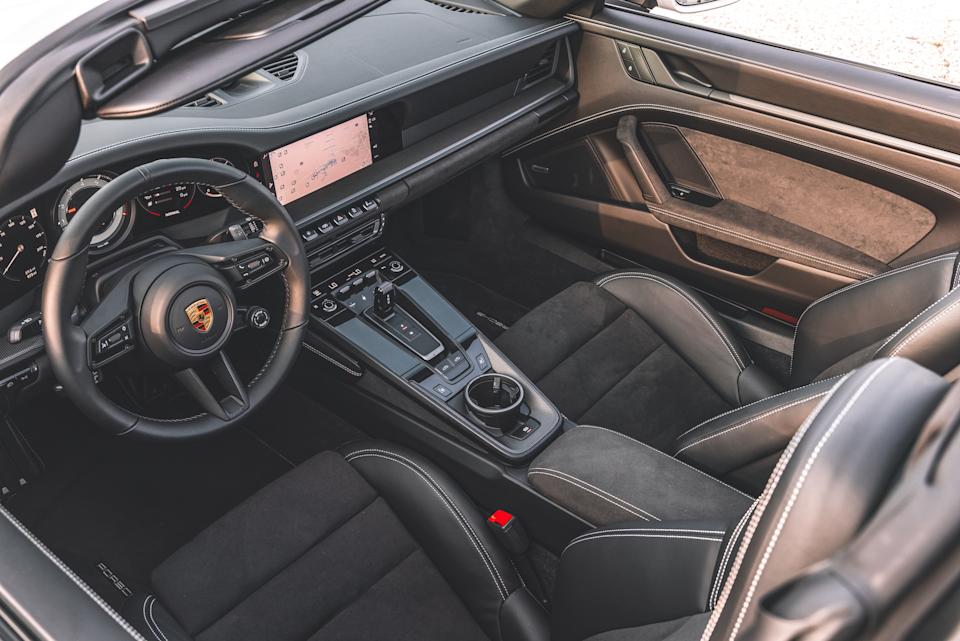
You’re not left wanting for grip, either, thanks to the Goodyear Eagle F1 SuperSport R tires (245/35ZR20 (95Y) fronts and 315/30ZR21 (105Y) rears), as well as all-wheel drive. The steering is both responsive and well-weighted, and tells you everything you need to know about what the car is feeling and doing—no need to wonder or hire a fortune teller. Finding a car with good steering is becoming increasingly difficult, and the GTS nails it.
Dial it down a few notches to drive across a city, and the GTS cruises comfortably from light to light. It’s happy to pick up the pace again as soon as the city lights appear in the rear-view mirror. The 911 has always been a great all-arounder, and going hybrid wasn’t an excuse to leave rough edges unsanded.
The Targa top makes the 911 even cooler, especially with that lovely wrap-around rear window. Leaving it up gives the car distinctive styling that’s more cohesive than the full convertible. Folding it at the push of a button allows sunlight into the cabin, which you’ll get less of than in the 911 Cabriolet. Granted, you also get less wind noise.
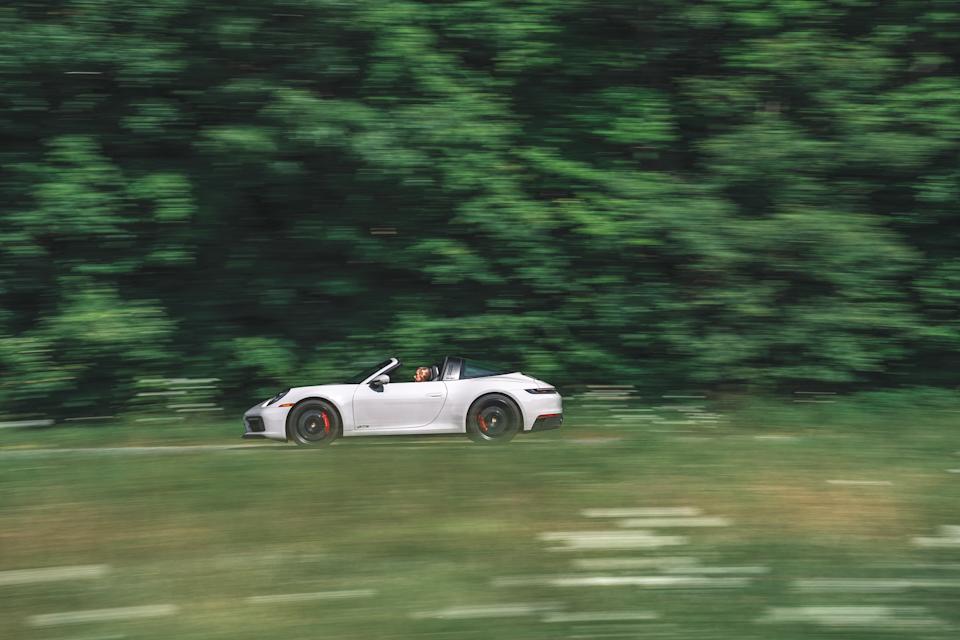
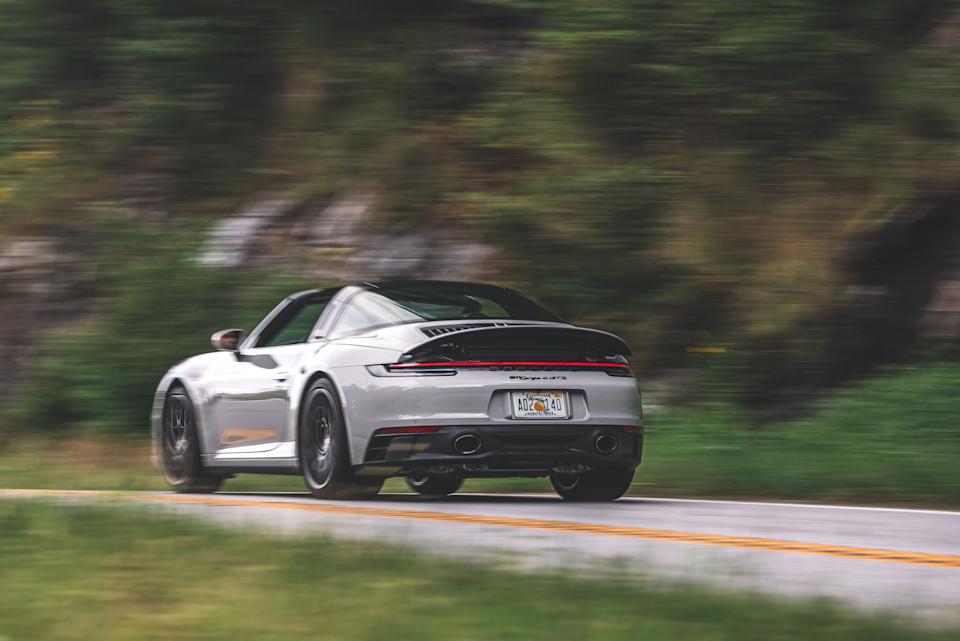
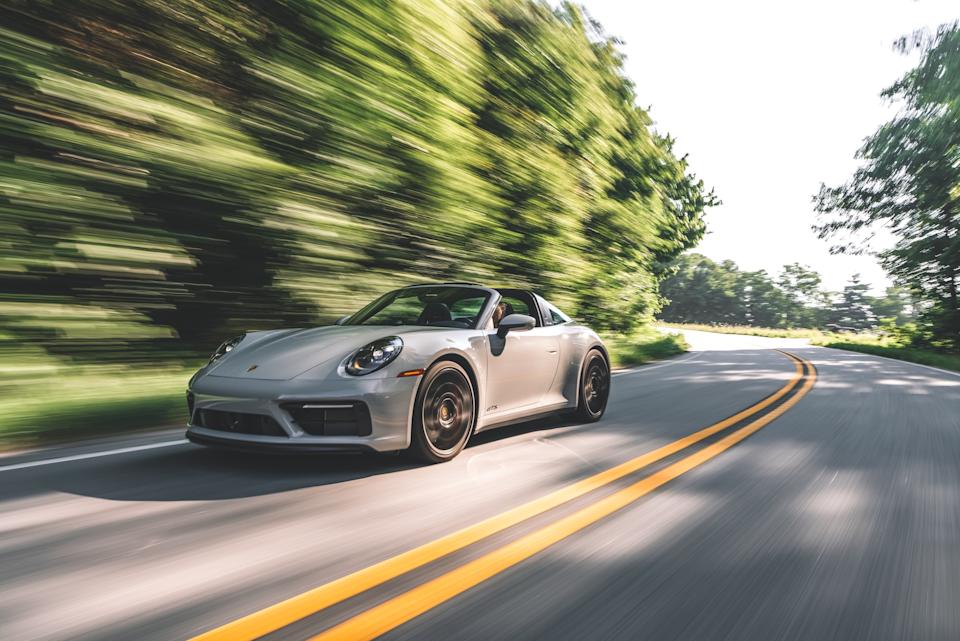
The brakes often stand out as a weak point in hybrids, even those designed for flat-out performance. The pedal tends to feel artificial because it juggles the hydraulic braking system and the regenerative braking system. In the GTS, the brake pedal feels mostly normal, even as the regen keeps the hybrid system’s tiny battery pack topped up. You can’t really tell you’re driving a hybrid, and that’s the point.
Verdict
All told, the hybrid GTS isn’t quite as old-school as purists would want it to be, but it undeniably still has that 911 magic. It’s the kind of hybrid that even the die-hard enthusiasts who hate most things new can easily get behind. The flat-six wails its cylinders out from the sport exhaust system; it’s seriously fast, and it’s engaging to drive. Above all, it’s a car with character, and there are not many hybrids I’d give this distinction to. It drives just like a modern 911 should.
Is the 911 better as a hybrid? Not really. It was great before. Not every car needs to be electrified. But, if hybrid technology is what it takes to keep the 911 and its flat-six around despite ever-tighter regulations, I’m all for it. If the T is not your cup of tea, there are several non-electrified 911s to choose from.
The GTS is the only gasoline-electric trim in the portfolio—at least for now. My crystal ball tells me there’s a lot more coming in the not-too-distant future. Like the turbocharger, hybrid technology will likely spread across the range, and I’m predicting that the next-gen 911 will be more comprehensively electrified. It’s going to be just fine.
2025 Porsche 911 Targa 4 GTS Specs | |
|---|---|

Quick Take
In many ways, the new GTS is exactly what a modern Porsche 911 should be.
Got a tip? Email us at [email protected]

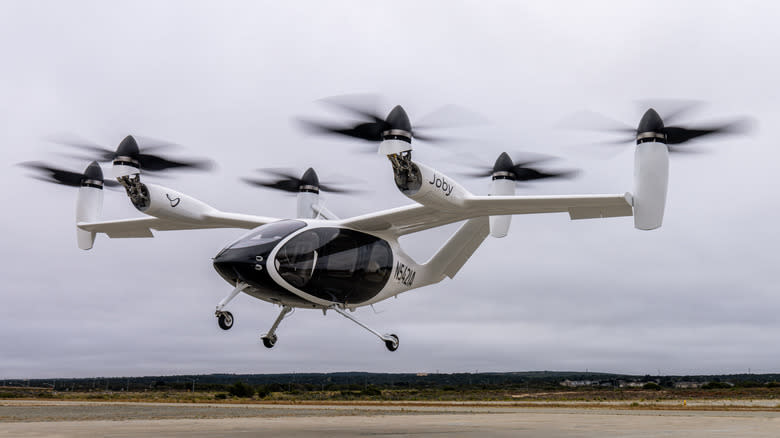


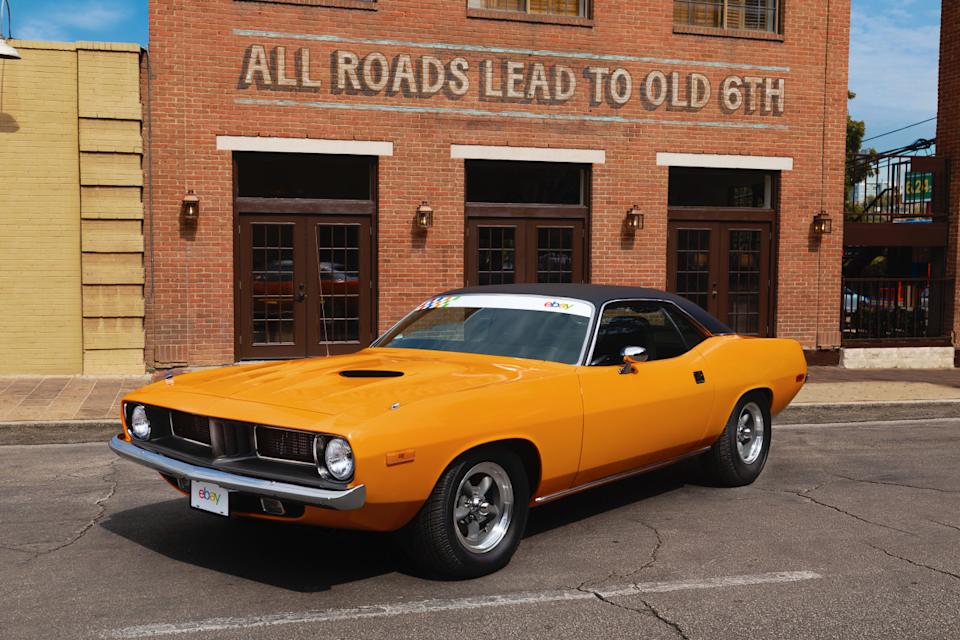


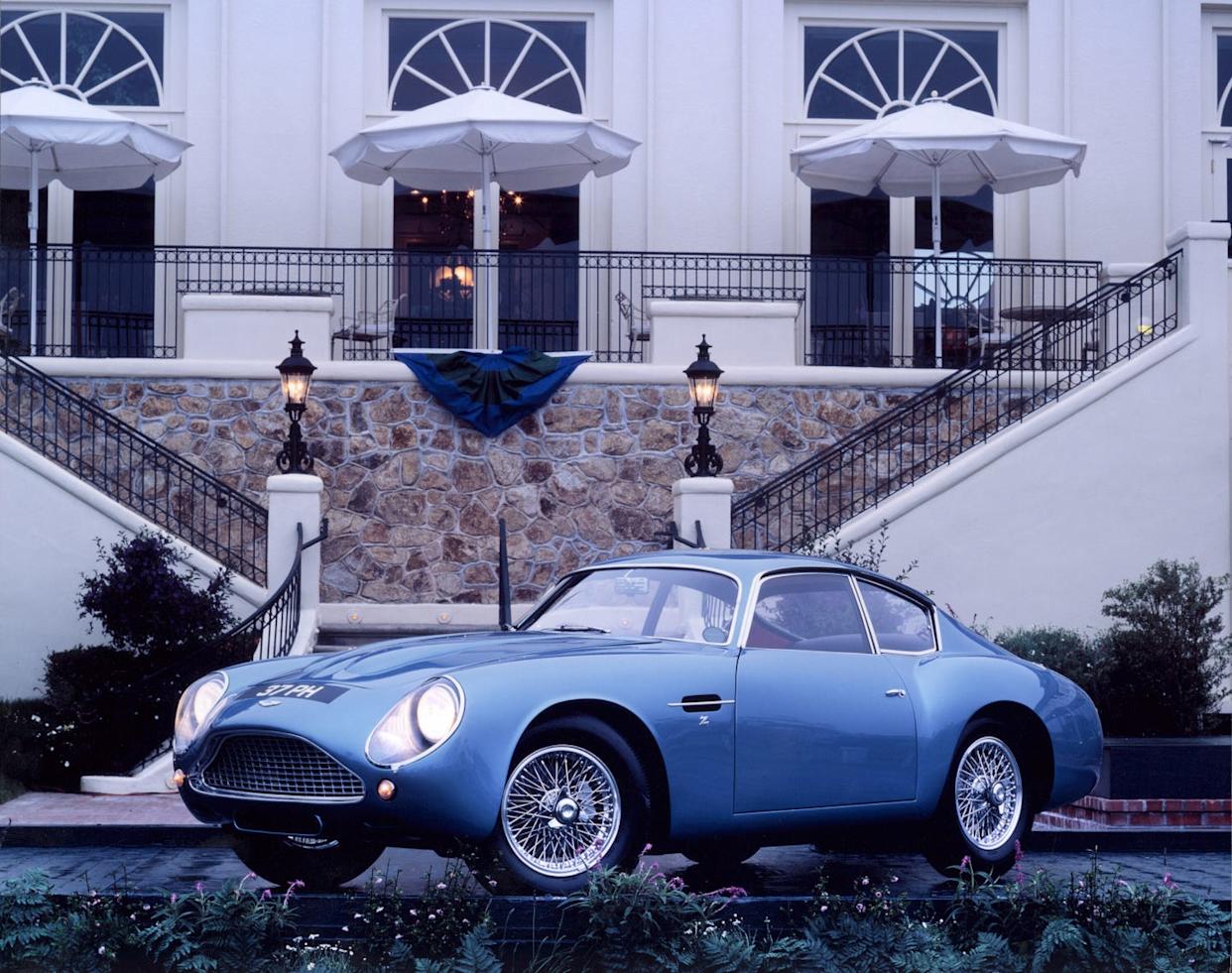
Comments